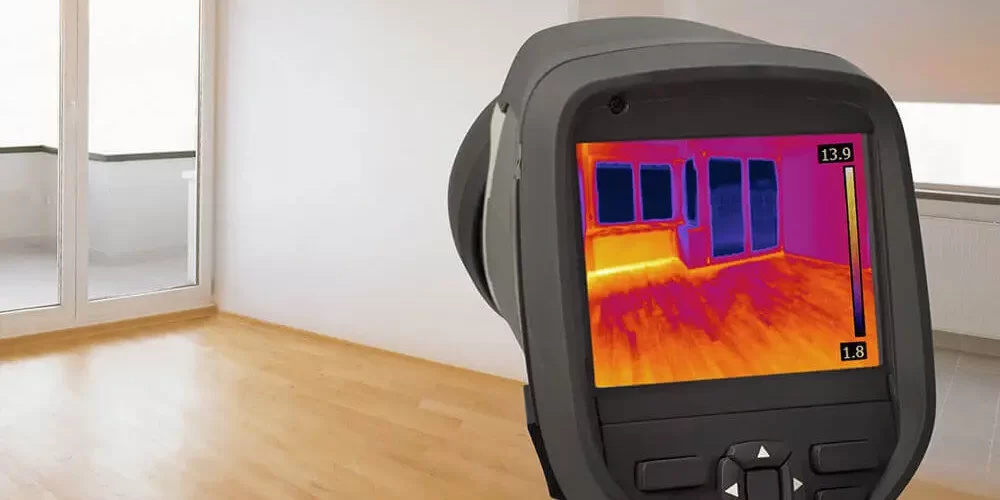Termites are among the most destructive pests, silently causing extensive damage to homes and buildings. For homeowners, this poses a serious concern, and the need for effective termite control and prevention is paramount. Thermal termite detection has become popular termite detection method.
It helps in non-invasive, accurate identification of termite infestations. But does thermal termite detection really work? Read this blog to learn how this technology functions, its effectiveness, and role in termite control strategies.
Understanding Thermal Termite Detection
Thermal termite detection uses infrared technology to identify heat patterns emitted by living organisms, including termites. Termites generate heat when they move and chew through wood. A thermal detector can pick up these heat signatures.
Thermal detectors create a thermal image by scanning walls, floors, and other areas where termites might be present, that highlights variations in temperature. These images help pest control professionals locate termite without needing to drill into walls or damage property.
How Effective is Thermal Termite Detection?
The effectiveness of thermal termite detection largely depends on the conditions under which it is used and the expertise of the operator. Here is a list of some factors that affect its reliability:
- Environmental Conditions: Thermal detection works best in stable temperature conditions. Extreme heat, cold, or wind can create false readings or obscure termite activity. Generally, inspections are conducted when environmental conditions do not drastically affect the thermal contrast between termites and the surrounding material.
- Depth of Infestation: Thermal imaging is most effective when termite activity is near the surface of walls or floors. Deeply embedded infestations may not produce enough thermal contrast for detection, potentially requiring additional methods for confirmation.
- Operator Expertise: The accuracy of thermal termite detection also depends on the skill of the technician. Proper training and experience help operators to interpret thermal images correctly. It helps them distinguish between termite activity and other heat sources, like electrical wiring or sunlight.
- Thermal Detection vs. Traditional Methods: When considering termite control, it’s important to compare thermal detection with traditional inspection methods. Conventional termite inspections involve visual checks – tapping on wood to listen for hollow sounds, and using moisture meters to detect dampness, as these might indicate termite activity.
Advantages of Thermal Detection
- Non-Invasive: Unlike traditional methods that may need drilling or tapping into walls, thermal detection is non-invasive. It means that there will be no damage to the property during the inspection process.
- Quick and Efficient: Thermal detection allows for a quick scan of large areas, providing immediate feedback and helping pest control professionals swiftly identify problem areas.
- Early Detection: As thermal imaging can detect subtle heat differences, it may identify termite activity earlier than traditional methods. It allows timely treatment of termites that prevents further damage.
Integrating Thermal Detection with Termite Control Strategies
Combining thermal detection with other termite control methods is crucial for effective termite management. Here’s how you can fit thermal detection into a broader termite control strategy:
- Initial Inspection and Detection: A thermal detector can be used for the initial inspection to identify termite activity. This method quickly highlights areas that may need further investigation or treatment.
- Confirming Infestations: Your inspector may use additional methods, like moisture meters, baiting systems, and visual inspections to confirm termite populations. This multi-layered method form the basis of accurate detection.
Choosing the Right Termite Treatment
A pest control professional from Tom’s Pest Control Perth can recommend appropriate annual termite treatment options based on the confirmed infestation. It may include chemical treatments, baiting systems, or installing a termite barrier to protect your homes and businesses from termite.
Recent studies have confirmed that Integrated Pest Management (IPM) stands out as the optimal strategy for tackling pest issues in residential environments. The effectiveness of IPM in multi-family housing depends on a coordinated approach involving residents, maintenance crews, cleaning personnel, pest control professionals, and property managers working together.
Does Thermal Termite Detection Really Work?
Thermal termite detection is an important tool for pest control professionals. It offers a non-invasive, quick, and early detection method. It works best when combined with other inspection techniques and within certain environmental conditions.
Understanding the role of thermal detection in termite control can help homeowners in making informed decisions about property protection.
Protecting Your Home from Termite Damage
Thermal termite detection is an effective method for identifying termite activity. But it should be part of a comprehensive termite control plan. A combination of thermal detection, traditional inspection methods, and appropriate termite treatment helps in the complete protection of your property.
Tom’s Pest Control has over 40 years of experience in providing precise termite pest control in Perth and nearby suburbs. We are industry approved Termidor applicator and provide a Termidor Assurance Warranty, which covers your home for structural damage of up to $2 million. Contact us at (08) 6202 7096 to discuss it in detail and get a free quote.
 (08) 6202 7096
(08) 6202 7096








